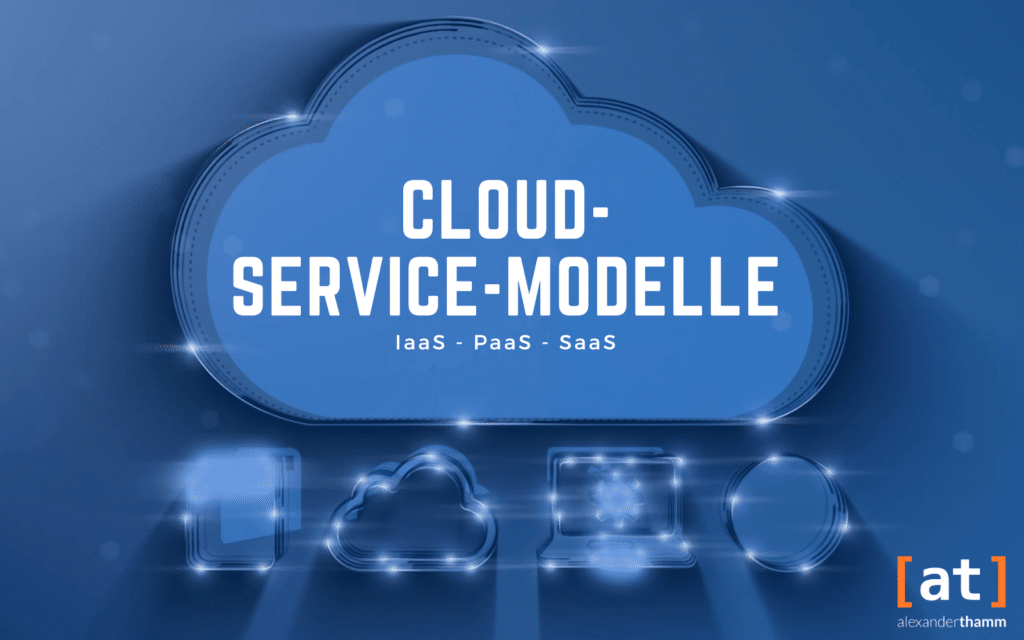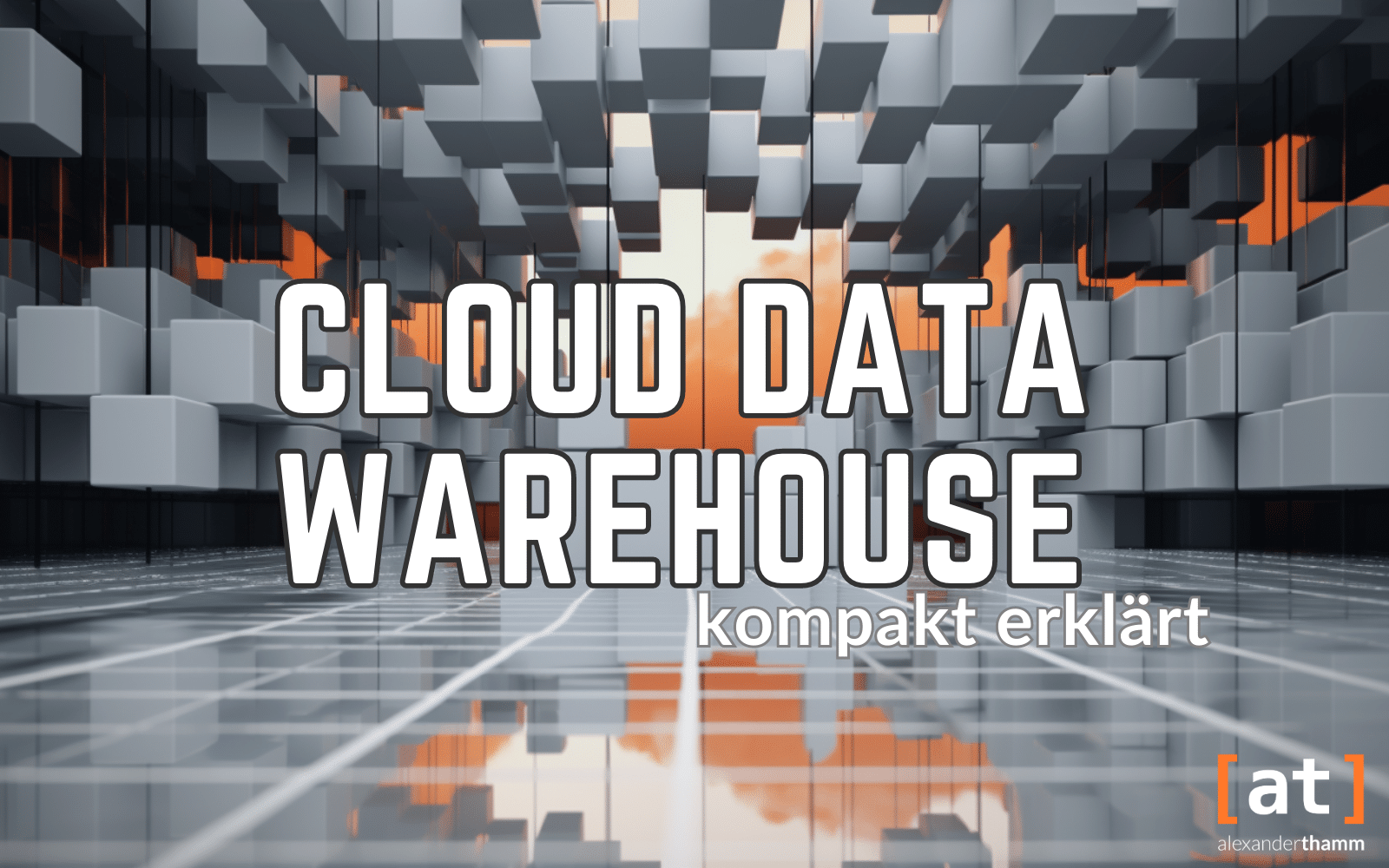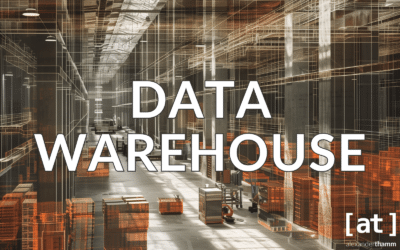As a powerful and cloud-based solution for storing, managing and analysing large amounts of data, a cloud data warehouse offers companies the ability to respond flexibly to growing data demands, use scalable resources and gain valuable insights from their data. By combining cloud technology and data warehouse functionality, a cloud data warehouse enables efficient data processing and facilitates access to information to make informed decisions and address business challenges.
Inhaltsverzeichnis
What is a Cloud Data Warehouse?
A cloud data warehouse is a Database management system hosted in the cloud and is used to store, manage and analyse large amounts of structured and unstructured data. It enables companies to manage their Data from various sources such as internal systems, external services, social media and other data sources and to collect them in a Central repository (storage location for managing and organising data, files or source code).
A cloud data warehouse offers powerful analyticsthat enable organisations to aggregate, filter, transform and analyse data to gain valuable insights. This includes functions such as complex queries, data aggregation, join operations, data cleansing and transformation.
Overall, a cloud data warehouse enables companies to efficiently store, process and analyse large amounts of data to make informed decisions, perform business analysis and gain valuable insights. By using cloud technology, companies can scale their data infrastructure, reduce costs and react flexibly to changing requirements.

Cloud computing offers numerous advantages and functions for operational processes. Read all the relevant information about this technology in our introductory article:
Cloud Data Warehouse vs. On-Premise Data Warehouse
The main difference between a cloud data warehouse and an on-premise data warehouse is the way they are operated and managed. A On-Premise Data Warehouse becomes locally in the data centres of a company operated. The company is responsible for purchasing, providing and maintaining the necessary hardware, software and infrastructure. Its own servers, storage devices and networks are used to provide the Data Warehouse to support. The company bears the costs for the acquisition and ongoing maintenance of the hardware as well as for the adaptation and updating of the software.
A Cloud Data Warehouse on the other hand Hosted in the cloud of a cloud provider. This means that the company does not have to purchase or maintain its own hardware. Instead, the resources and infrastructure are provided by the Cloud provider provided and managed. The company uses the cloud services to store, process and analyse data. The costs for operating the data warehouse in the cloud are often based on actual resource consumption, which allows for flexible scaling and cost control.
Other differences include:
- ScalabilityA cloud data warehouse can be scaled much more easily and quickly than an on-premise data warehouse in terms of storage and processing capacity. Cloud computing offers elastic resources that can be scaled up or down as needed.
- Costs: With an on-premise data warehouse, the initial investment costs are high because hardware, infrastructure and software have to be purchased. Ongoing costs include maintenance, personnel and updates. With a cloud data warehouse, these initial investments do not apply and the costs are usually usage-dependent and flexibly scalable.
- Maintenance and managementWith an on-premise data warehouse, the company itself is responsible for maintaining, updating, monitoring and securing the infrastructure. With a cloud data warehouse, the cloud provider takes responsibility for the maintenance, security and availability of the infrastructure.
- Accessibility and cooperation: A cloud data warehouse enables easy access and collaboration across different locations. Users can access and collaborate on the data from anywhere. An on-premise data warehouse can make access and collaboration difficult, especially if the data is stored on physical servers and on the internal network.

Discover the most efficient form of data collection: learn how data warehousing has evolved in the face of new alternatives such as data lakes and data mesh, and which solution best suits your analytics needs.
Cloud data warehouse architecture
A cloud data warehouse architecture consists of Different components and layers working togetherto store, process and analyse data. In general, the architecture of a cloud data warehouse includes the following elements:
- Data sourcesThese are the different data sources from which the data warehouse collects data. These can be internal systems such as enterprise applications, Databases or external data sources such as APIs, social media, IoT devices or streaming data.
- Data Ingestion LayerThis layer is responsible for the collection and transfer of data from the various data sources into the data warehouse. It can use tools and mechanisms such as data integration, ETL (Extract, Transform, Load) processesstreaming data pipelines or API integrations.
- Data storage layer: Here the data is stored in the cloud data warehouse. The data storage layer consists of databases or data stores that are specially optimised for processing large amounts of data. They offer functions such as high scalability, data partitioning, compression and data replication for high availability.
- Data Processing Layer: This layer is responsible for processing and transforming the data in the data warehouse. Queries and data operations are performed here to prepare the data for analysis. It includes functions such as data aggregation, filtering, join operations and data cleansing.
- Analytical tools and services: This component allows users to access the data in the data warehouse and perform data analysis. This can be Business intelligence tools, Data visualisation tools, Machine learning frameworks or other analytical applications that access the data and gain insights.
The exact architecture of a cloud data warehouse can vary depending on the provider and specific requirements. However, the above components form the foundations of a typical cloud data warehouse architecture.
Advantages of the Cloud Data Warehouse
Through the use of the Cloud infrastructure a cloud data warehouse offers a range of Advantages compared to conventional on-premise data warehouses. Here are some of the most important advantages:
- Scalability: Cloud data warehouses allow resources to be scaled easily and quickly according to demand. Companies can easily add or reduce additional storage and computing capacity to meet current requirements. This provides flexibility and enables efficient use of resources.
- Cost saving: Cloud data warehouses significantly reduce initial investment costs as companies do not need to purchase expensive hardware or infrastructure. Instead, costs in the cloud are often based on actual resource consumption and can be scaled flexibly depending on usage. This allows companies to optimise data operation costs and only pay for the resources that are actually used.
- Fast deploymentCompared to on-premise data warehouses, cloud data warehouses enable faster deployment. Companies can set it up and make it operational within a very short time, as the necessary infrastructure is already in place. This significantly speeds up the development and deployment process of data warehouse projects.
- Flexibility and agilityCloud data warehouses offer companies the flexibility to seamlessly integrate new data sources and types. Companies can efficiently process and analyse different data formats, structures and unstructured data sources. This enables faster adaptation to changing business needs and more agile data operations.
- Power and scalability: Cloud data warehouses are designed to efficiently process large amounts of data and perform complex queries. They offer powerful processing capabilities and enable companies to perform sophisticated analyses, Business Intelligence and machine learning tasks. The scalability of the cloud infrastructure allows companies to maintain high performance even with heavy traffic.
- Data integration and collaboration: Cloud data warehouses enable easy data integration from different sources. Companies can seamlessly merge and analyse data from internal systems, external services, social media and other data sources. In addition, cloud computing facilitates collaboration and access to data from different locations.
- Administration and maintenanceWith a cloud data warehouse, there is no need to maintain and update hardware infrastructures. The cloud providers take over the responsibility for maintaining, monitoring, securing and updating the infrastructure. This relieves companies of operational tasks and allows them to focus on data analysis and use.

Cloud computing enables companies to use their IT resources more flexibly and cost-efficiently. The cloud architecture and infrastructure play a central role in this. Find out which aspects you need to pay attention to in our blog post:
Cloud Computing - Architecture & Infrastructure: Compactly explained
Products and solutions
Some well-known examples of cloud data warehouse solutions are Amazon Redshift, Google BigQuery, Microsoft Azure Synapse Analytics, SAP Data Warehouse Cloud and Snowflake. These platforms offer Scalable and powerful capabilities for storing and analysing large amounts of data in the cloud.
- Amazon RedshiftAmazon Redshift is a fully managed cloud data warehouse from Amazon Web Services (AWS). It offers high scalability and performance for processing large amounts of data. Redshift supports parallel queries and offers extensive analytics. It integrates seamlessly with other AWS services and enables easy data integration from multiple sources. Redshift also offers built-in security features such as encryption and access control.
- Google BigQueryBigQuery is a fully managed serverless cloud data warehouse from Google Cloud. It features fast performance and the ability to process large amounts of data in a short time. BigQuery uses the SQL query language and offers scalable computing and storage resources. It also supports the integration of data from different sources and offers advanced analytics such as machine learning and advanced statistical analysis.
- Microsoft Azure Synapse Analytics: Azure Synapse Analytics (formerly known as Azure SQL Data Warehouse) is a comprehensive cloud data warehouse solution from Microsoft Azure. It offers a combination of data warehouse and Big Data analytics capabilities. Synapse Analytics enables seamless integration of structured and unstructured data from multiple sources and supports advanced analytics, machine learning and real-time processing. It also offers integrated security and compliance features.
- SAP Data Warehouse Cloud: SAP Data Warehouse Cloud enables the aggregation and management of data from multiple sources and provides extensive data integration, data modelling and data analytics capabilities. It also supports AI-driven capabilities such as intelligent automation and predictive modelling. SAP Data Warehouse Cloud integrates seamlessly with other SAP solutions and enables easy collaboration and sharing of data.
- Snowflake: Snowflake is a cloud-based data warehouse optimised for processing structured and semi-structured data. Snowflake uses a unique architectural structure that enables elastic scalability and high-performance data processing. It supports parallel query execution and provides high performance when processing large amounts of data. Snowflake enables seamless integration of data from multiple sources and provides extensive data management and analysis capabilities. It also offers advanced security and data protection features.

In our article on cloud service models, we inform you about the differences between the three different services - Infrastructure-as-a-Service (IaaS), Platform-as-a-Service (PaaS) and Software-as-a-Service (SaaS) - and the benefits for your company.
Conclusion: Why are cloud data warehouses used?
Cloud data warehouses play a transformative role in enterprise data management and analytics. They offer a wide range of benefits, including scalability, flexibility, cost efficiency and powerful analytics. By leveraging cloud infrastructure, companies can easily expand their data infrastructure and respond to changing needs without having to make large investments in hardware and maintenance. Cloud data warehouses enable companies to efficiently process large amounts of data, gain valuable insights and make informed business decisions. They are an important component of a modern data strategy and allow companies to take full advantage of the Exploit the value of their data to gain competitive advantage and be successful. As cloud technology continues to evolve and cloud data warehouses become more widely adopted, their importance in the business world will continue to grow.
Do you have questions about the integration of cloud services in your company? Then please do not hesitate to contact us. We are happy to be at your disposal at any time and offer non-binding advice.











0 Kommentare